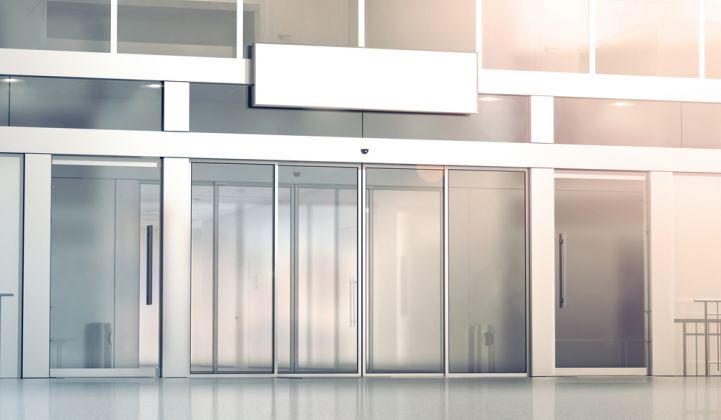The smart home has seen impressive technological innovations designed to improve sustainability and reduced energy usage, leading to a drop in associated utility expenditures. But the same is not true for businesses: The “smart store" does not yet exist.
To make the smart store a reality, the same innovations found in the smart home must be applied to brick-and-mortar retail outlets to help them manage energy usage and reduce overhead expenses.
Whether or not a retailer operates in multiple locations, energy costs take up a large percentage of overhead expenses (think refrigeration units at a grocery store or AC units running at a coffee shop on a hot summer day). Without an energy management system in place, these HVAC systems often go unchecked, unnecessarily running through the day and night. Worse yet, their energy costs are assumed to be a necessary, unchangeable factor.
Retailers have an opportunity to save immensely on energy usage and overhead expenses if similar innovations from the smart home carry over to the store. For these businesses, connected devices are the next step in focusing on sustainability while cutting costs, increasing energy efficiency and easing the work of energy managers.
At any given retail location in the United States, it’s likely facility managers are struggling to accommodate employees, customers and their temperature preferences, affecting air conditioners, furnaces and thermostats that maintain pleasant work environments -- which costs money. Another expense often overlooked is when employees leave a store at the end of the day. It's not unusual for the HVAC system to work throughout the night, even when unneeded. There is a lack of communication between the stores and their environments.
To remedy this, some large retailers use expensive, complex energy management solutions to handle their usage and lower their bills; the same types of technology are simply inaccessible to small and medium-sized stores. A major roadblock for interested business owners is the complexity of current systems, which often requires massive infrastructure changes and store downtime. While smart thermostats for the home have been streamlined to simple, elegant devices, retailers have not been so lucky.
Largely, the energy management systems available to them are complicated and costly, requiring software licenses, wired infrastructure, licensed electricians and often permitting. In addition to these costs, there are also substantial investments required for future system upgrades, which incur additional costs in the form of time and training. With these challenges, it’s easy to see why only the largest retailers can afford this undertaking.
A case study from National Stores, however, showcases the benefits that smarter stores can achieve with the right technology solution. National Stores is a California-based retailer with more than 350 locations across 22 states, and it recently deployed an energy management system with Zen Ecosystems that was created to help small to medium-sized retailers reap the benefits the smart store has to offer. Put off by the difficulty and complexity of most energy management systems designed for larger operations, National Stores opted for a streamlined hardware/software offering, Zen HQ, that cuts down on its energy costs through a more focused approach to energy management. It’s a connected wireless system that’s as easy to use as a remote control, and it eliminates excessive expenses and installation time to focus on the biggest culprit of energy waste in any organization: HVAC.
As a result, National Stores has been able to significantly improve its bottom line. In the first month, the company’s energy bill decreased by more than 25 percent, and the savings from demand-response program participation has led to new revenue streams. Furthermore, ROI is anticipated in six to 12 months, compared to an industry average of five years.
“We started seeing an immediate difference,” said Jimmy Lee, energy manager of National Stores. “We put about 20 thermostats in our corporate office building, which holds about 200 employees. We installed the system in August, so the first full month it was in use was September. […] We had a consistent record of paying an average of about $10,000 a month every September; after we put the Zen system in, it was $2,500 lower.”
Stores are finding new and creative ways to engage shoppers through technology to pique interest and demand (e.g., mobile apps, in-store interactive displays), yet they have so far lagged when it comes to using similarly creative technologies to manage peak load and involve themselves in demand response programs. Companies make it easy for their customers to have fun and shop efficiently: Customers can receive coupons on their mobile phones when passing by the location of a frequently visited retailer or order groceries online with an app and pick up the order at the storefront. But these same stores do little with technology to save on backend costs that are eating away at their bottom line.
The EPA estimates that less than 15 percent of commercial buildings in the U.S. have an energy management system at all, much less one that uses technology to react to the ebbs and flows of the grid’s fluctuating demands.
The National Stores example is living proof: The business value for stores to get smarter is there. Lower-cost, less complicated tools to enable retailers to get smart are entering the spotlight. As more organizations become aware of these benefits, it’s likely that more and more will begin taking advantage of these technological breakthroughs.
***
James McPhail is the CEO of Zen Ecosystems, which provides intelligent energy management solutions for businesses and consumers.



